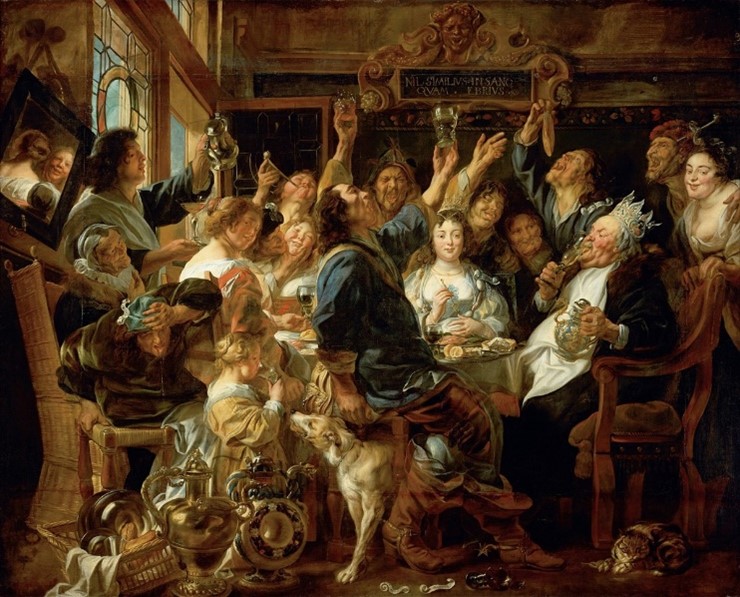
Capitalism Encapsulated: Mises in Four Easy Pieces
Ludwig von Mises boiled down capitalism to the essential features that he believed every citizen needed to know.
By Dan Sanchez – June 12, 2018
One day in 1959, hundreds of students, educators, and grandees filled the enormous lecture hall of the University of Buenos Aires to capacity, overflowing into two neighboring rooms. Argentina was still reeling from the reign of populist presidente, Juan Perón, who had been ousted four years before. Perón’s economic policies were supposed to empower and uplift the people but only created poverty and chaos. Perhaps the men and women in that auditorium were ready for a different message. They certainly got one.
A dignified old man stepped before them and delivered a bold, bracing message: what truly empowers and uplifts the people is capitalism, the much-maligned economic system that emerges from private ownership of the means of production.
This man, Ludwig von Mises, had been the world’s leading champion of capitalism for half a century, so his message was finely honed. Not only a creative genius but also a superb educator, he boiled down capitalism to the essential features that he believed every citizen needed to know. As his wife Margit recollected, the effect on the crowd was invigorating. Having spent years in an intellectual atmosphere of stale, stagnant ideas:
The audience reacted as if a window had been opened and fresh air allowed to breeze through the rooms.
This lecture was the first in a series, the transcriptions of which are collected in the book Economic Policy: Thoughts for Today and Tomorrow, edited by Margit.
Life (and Death) Before Capitalism
To demonstrate in his lecture how revolutionary the advent of capitalism was in world history, Mises contrasted it with what he called the feudalistic principles of production during Europe’s earlier ages.
The feudal system was characterized by productive rigidity. Power, law, and custom prohibited individuals from leaving their station in the economic system and from entering another. Peasant serfs were irrevocably bound to the land they tilled, which in turn was inalienably tied to their noble lords. Princes and urban guilds strictly limited entry into whole industries and precluded the emergence of new ones. Almost every productive role in society was a caste. This productive rigidity translated into socio-economic rigidity, or “social immobility.” As Mises reminded his Argentine audience:
…a man’s social status was fixed from the beginning to the end of his life; he inherited it from his ancestors, and it never changed. If he was born poor, he always remained poor, and if he was born rich—a lord or a duke—he kept his dukedom and the property that went with it for the rest of his life.
Over 90 percent of the population was consigned to food production so as to precariously eke out sustenance for their own families and contribute to the banquets of their domineering lords. They also had to make their own clothing and other consumers’ goods at home. So, production was largely autarkic and non-specialized. As Mises highlighted, the small amount of specialized manufacturing that existed in the towns was devoted largely to the production of luxury goods for the elite.
From the High Middle Ages onward, production in western Europe was higher and the average person much less likely to be a chattel slave than during antiquity and the Dark Ages. But the economic system was still fixed and moribund; the common man had no hope of progressing beyond a life teetering between bare subsistence and starvation.
It was then and there that capitalism entered the scene, saving the lives of millions, and vastly improving the lives of millions more.
And in the 18th century, in the Netherlands and England, said Mises, multitudes were about to go over the Malthusian ledge, because the population had grown beyond the land then available to employ and sustain them.
It was then and there that capitalism entered the scene, saving the lives of millions, and vastly improving the lives of millions more.
Four key distinguishing features of capitalism can be gleaned from Mises’s lecture. What follows is an exposition of those features, which can be thought of as, to paraphrase Richard Feynman, “Mises in four easy pieces.”
It is important to note that, as Mises fully noted elsewhere, what emerged in the 18th century and developed subsequently was never a purely free market. So, the following characteristics have never been universal. But these features did come into play far more extensively in this period than ever before.
Read more about 1) Dynamic Production, 2) Consumer Sovereignty, 3) Mass Production for the Masses, and 4) Prosperity for the People here.
